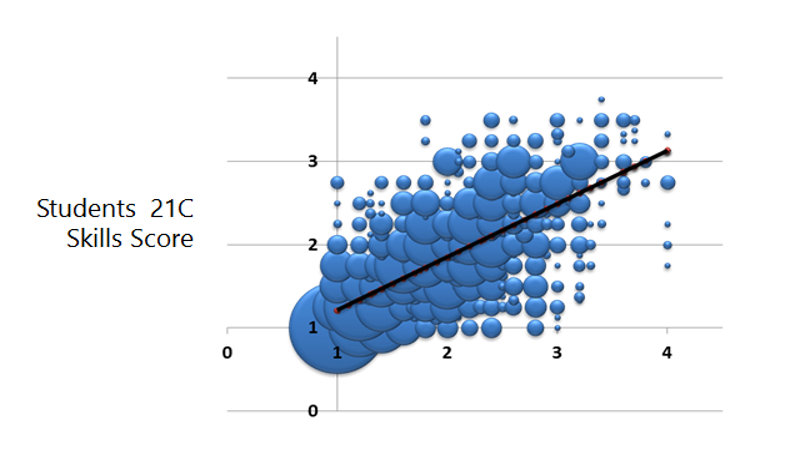Explore the research behind 21st century learning design
Explore the research behind 21st century learning design
The 21CLD curriculum – developed to enhance 21st century skills in student learning – builds on the 21CLD research methodology, providing a collaborative, practice-based process that helps educators transform how they design enriching learning activities for their learners.The innovative teaching practices developed from ITL research are three-pronged:
- Learner-centered pedagogy
- Extending learning
- ICT integration
Learner-centered pedagogy means that learning:
- Is personalized
- Is collaborative
- Builds knowledge
- Encourages self-regulation
Extended learning means that the learning environment:
- Encourages problem solving
- Extends beyond the wall of the school to provide 24/7 learning opportunities
- Develops global and cultural understandings
Finally, innovative ICT integration requires that:
- ICT must be embedded in the activity
- ICT is used at a high level by both educators and learners for knowledge building and creativity
This graph illustrates crucial findings from the ITL research of 21st century skills in learners.

In their research, ITL found a direct correlation between the degree of 21st century skills incorporated in learning activities and the level of the skills demonstrated in learners’ work. In other words, when educators provide learners with opportunities to practice 21st century skills, they develop those skills.
The ITL findings confirmed that learning design is the most essential element in the development of 21st century skills. Unfortunately, the research also found that good examples of innovative learning activities were rare:
- Few required learners to practice 21st century skills at a deep level
- Most didn’t incorporate 21st century skills at all
- Those that did only did so at low levels
The 21st century learning design (or 21CLD) program was the answer to this problem. It bridges the gap between theory and practice by providing a framework for learning design in six dimensions researchers have identified to be critical in today's workforce:
- Knowledge construction which requires learners to go beyond memorizing information to analyzing, interpreting, synthesizing, and evaluating information. They must then apply their new knowledge in new contexts to make connections across multiple disciplines.
- Collaboration involves learners working together, sharing responsibility, and making substantive decisions together. At the deepest level of collaboration, learners’ work is interdependent.
- Real-world problem solving and innovation involves a task with a defined challenge for learners. The problems must be authentic situations that exist outside of an academic context so that learners may implement their solutions in the real world.
- Skilled communication requires learners to produce extended or multi-modal communication using evidence to support their ideas. At its deepest level, learners craft their communication for a specific audience.
- Self-regulation requires learners to work on an activity for an extended period. It requires learners to plan their work by breaking up their responsibilities. They must also have opportunities to revise their work based upon their own reflection and feedback from others (peers, educators, or experts).
- ICT for learning examines learners' use of technology to support knowledge construction and encourages learners to become designers of ICT products that others use.
A learning activity is any task that learners perform as part of their school-related work, whether it takes one class period or an extended time with work done in and outside of school.
The 21st century learning design program consists of tools and resources that help educators develop a deep understanding of 21st century skills. It also provides a framework to analyze (or code) learning activities to evaluate how deeply the skills are embedded in an activity. Through this framework, educators also develop a common language for 21st century skills, allowing for easier collaboration with colleagues from mixed disciplines to design learning activities at the deepest levels.
